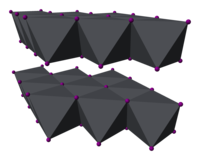
Photo from wikipedia
2D-semiconductors with strong light-matter interaction are attractive materials for integrated and tunable optical devices. Here, we demonstrate room-temperature wavelength multiplexing of the two-primary bright excitonic channels (Ab-, Bb-) in monolayer… Click to show full abstract
2D-semiconductors with strong light-matter interaction are attractive materials for integrated and tunable optical devices. Here, we demonstrate room-temperature wavelength multiplexing of the two-primary bright excitonic channels (Ab-, Bb-) in monolayer transition metal dichalcogenides (TMDs) arising from a dark exciton mediated transition. We present how tuning dark excitons via an out-of-plane electric field cedes the system equilibrium from one excitonic channel to the other, encoding the field polarization into wavelength information. In addition, we demonstrate how such exciton multiplexing is dictated by thermal-scattering by performing temperature dependent photoluminescence measurements. Finally, we demonstrate experimentally and theoretically how excitonic mixing can explain preferable decay through dark states in MoX2 in comparison with WX2 monolayers. Such field polarization-based manipulation of excitonic transitions can pave the way for novel photonic device architectures.
Journal Title: Materials horizons
Year Published: 2022
Link to full text (if available)
Share on Social Media: Sign Up to like & get
recommendations!